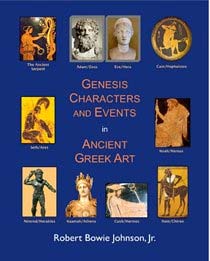
Evidence that Noah’s Ark Landed on a Mountain 17 Miles South of Ararat
An illogical and unwarranted assumption prevails today relating to the landing spot of Noah’s ark. People—highly educated people—are sure that Noah’s ark landed on the remote and inaccessible heights of Mount Ararat, a 17,000-foot (5180 m) volcanic mountain in modern-day Turkey. The Book of Genesis does not say that the ark landed on Mount Ararat, but rather “on the mountains of Ararat” (Genesis 8:4), meaning on a mountain somewhere within the range.
Think about it: If you were Noah, would you land a huge craft full of animals, tools and supplies near the top of the highest, craggiest peak in the mountain chain? Why would you land your ship and everything you’ve brought from the pre-Flood world in an extremely precarious location? Wouldn’t you want to live in the ark until you made suitable habitations nearby? Wouldn’t you want to use the ark wood to build those habitations, and to make fires?

Above left, we see Mount Ararat in modern-day Turkey, and get an idea how impractical it would have been to try land the ark of Noah on it. Above right, we see the mountain seventeen miles south of Mount Ararat where the ark actually first came to rest (arrow), and the impression it left when it slid down the mountain about 100 years later. At the top of the mountain, we see the escarpment cliffs which the “Epic of Gilgamesh” refers to as the “wall of heaven” (Image: David Allen Deal, Author supplied)
A More Reasonable Location for the Ark
In Noah’s Ark—The Evidence: The Bible, The Flood, Gilgamesh & The Mother Goddess Origins, the late David Allen Deal presented a common-sense, convincing argument that Noah’s ark landed on an 8,000-foot (2440 m) mountain seventeen miles south of Mount Ararat, based on his visits to the site and fact after fact.
As a friend and truth-seeking associate, David helped me formulate the content of my books Noah in Ancient Greek Art and Genesis Characters and Events in Ancient Greek Art. I dedicate this article to his memory, and summarize here just some of the surprising evidence he uncovered about the true landing site of Noah’s ark.
- Does ‘New Evidence’ Prove Noah’s Ark Is Buried on a Turkish Mountain?
- Is this the Final Resting Place of Noah? It is Certainly One of the Contenders
- Ancient Greek Vase Artists Painted Images of Biblical Figures Noah and Nimrod Over 2,000 Years Ago
Deal’s Theory
The ark first came to rest on the mountain south of Ararat in a welcoming and accessible spot at an elevation of 7,400 feet (2255 meters), supposed location indicated by the arrow in the illustration, above.
The hull of the ark provided basic raw materials for the occupants of the first post-Flood city, Mesha-Naxuan. They stripped its planks and beams to build roofs, and used the melted down kapar or bi-tumen (tar) to seal the roofs from rain. They most likely used the wood for furnishings as well as for fires.

Sketch of the landing site on Mashu or Mesha Mountain as the survivors began to construct the first post-Flood city—Mesha. (David Allen Deal).
When the ark slid downhill after an earthquake and rains provided the impetus, perhaps after 100 years, the Mesha-Naxuan lumber yard moved a mile across the mountain, and 1,200 feet (365m) lower. Two ark impressions remain on the mountain: one where it landed, and the other where it descended to the lower elevation. Evidence on site indicates that the ark slid down the mountain, away from Mesha-Naxuan, after about 1,000 dwellings had been built there.
Etymological Evidence
Mesha means “to be drawn out of water,” the name most likely given to it by Noah. Nax-xuan is a Greek interpretation for the Hebrew, noach tsywn, “Noah’s Zion,” or “Noah’s capital,” a name given to the city by later generations.
Mesha is a variation of Moshe meaning “saved through water” as Moses (Moshe in Hebrew) was saved from the Nile. In the ancient Epic of Gilgamesh, Gilgamesh (Nimrod/Herakles) traveled to the mountains of Mashu to find Utnapishtim (Noah/Nereus), the man who had brought humanity through the Flood. Gilgamesh (Gl-Gm-Mesh) means “the man who revealed Mesha.”
Genesis 10:21 refers to Noah’s son, Shem, as the “forefather of all the sons of Eber.” They were said to dwell “toward Sephar, a mountain of the East,” having come “from Mesha” (Genesis 10:30). The traditional Kurdish names for the mountain today are Masher Dag and Mashur Dag meaning respectfully, doomsday mountain and resurrection mountain.

A massive geological twin-peaked feature at the site of the anchorage of Noah’s ship. The limestone uplift is approximately three hundred feet of pure white cretaceous limestone, an extremely visible and impressive cliff, which appears as a wall reaching up to heaven as one stands beneath it. (Image: David Allen Deal).
In Shemitic (from Noah’s son, Shem), the place where Noah dwelt was also called Dilmun which means “the abode of the dangling (dried-up),” a fitting epithet for those left high and dry on the mountain after the world-wide Flood. Both names, Mesha and Dilmun, attest to Noah’s salvation from the Flood at this location.
- Kuh-e Alvand: Searching for the True Mountain of Noah and his Ark
- Hollywood resurrects Noah's Ark, but did they get it right?
- Startling Similarity between Hindu Flood Legend of Manu and the Biblical Account of Noah
From Literature
The Epic of Gilgamesh refers to the “wall of heaven” on Mount Mesha. You can see that wall, in the form of escarpment cliffs, in the photos and in David Deal’s drawing.
Mesha-Naxuan was the very first city of our post-Flood civilization, built by Noah and his sons and their sons, from materials scavenged from the ark, long lost to the world but mentioned in many historical accounts.
In a footnote in Antiquities of the Jews by Flavius Josephus, translator William Whiston says that Noah’s landing and dwelling spot was called “Naxuan, the place of the first descent.” Here he quoted Armenian historian, Moses of Chronensis. This phrase “place of first descent,” implies a second descent, and that is exactly what the evidence on the mountain itself is telling us.
The city of Mesha-Naxuan was the first “city” built by the Flood survivors and their descendants. Then from an earthquake and rain, the ark slid down 1,200 feet (365m) to its second and final resting place, leaving what is now a one-acre elliptical 538-foot-long (164 m) ship’s hull impression at 6,200 feet (1890 m).
Most or all of Noah’s offspring abandoned Mesha-Naxuan and built a new settlement where the ark came to rest. This second town built after the Flood was originally called Seron because of the Tsar or sharp out-cropping that penetrated and arrested the downhill slide of the ark hull remains. The “sar” part of the name remained in the later place names: Ni-sar and Na-sar. The Babylonians referred to the town as Nisir.
Examining the Site
While mountain adventurers still climb Ararat, David Deal and a small unconnected group of other explorers began to realize the implications of this site at Mashur Dag, having seen the evidence for what it is. The ark mold impression is compelling as a stand-alone feature.
The remnants of many ancient habitations discovered by Deal in 1996-1997 at the upper landing site (Mesha-Naxuan) and the “wall of heaven” written of in the Epic of Gilgamesh convincingly add to the evidence. Furthermore, the connected meanings of the various place-names on the mountain provide us with a unifying clarity. As the entire mountain location is now becoming known and understood, it is impossible to conceive of the ark landing anywhere else, especially on a massive volcano.
Tracing the Goddess
David Deal’s discovery relates directly to the depiction of a key, but relatively unrecognized Genesis woman in ancient art. In the early post-Flood world, the ancients revered Naamah, the last woman mentioned in the line of Cain (Genesis 4:22), who came through the Flood as Ham’s wife, and who then instigated the abandonment of God and the return to the serpent’s “enlightenment,” and the exaltation of man as the measure of all things.

Ancient artists deified Ham’s wife, the Cainite princess Naamah (Genesis 4:22), identifying her with the mountain upon which she landed in the ark. In these ancient images, she wears a mountain hat and her special dress is flounced and tiered, representing sections of the escarpment on the mountain. Naamah’s image to the right holds the staff of the two-headed serpent symbolizing the serpent’s rule before the Flood, and now, because of her Cainite dedication, the serpent’s rule resumed in the post-Flood world. (Author supplied).
A most revealing 782-page book by thorough and brilliant secular scholars Anne Baring and Jules Cashford, The Myth of the Goddess , traces almost all of the goddesses of the ancient Near-eastern and Mediterranean world back to a single figure, the Sumerian Nammu—a minor linguistic variation of Naamah. I would re-title their book “The Memory of the Adored Woman” because that’s what it’s really all about.
After God confounded the one language into many at the tower of Babel, mankind adored Naamah by many titles including: Lama, Astarte, Ishtar, Hathor, Isis, Maat, Artemis, Inanna, Asherah, and ultimately in her most glorious idolization as the great Greek goddess Athena. [See The Hidden Identity of the Woman Glorified as Athena: Her Link to the Pre-Flood World and Ancient Greek Vase Celebrates the Exaltation of Our Ancestors as Gods].
Now we can see that the many ancient goddesses in the post-Flood world did not spring from human imaginations, or materialize out of nowhere, but rather linked directly back to the Cainite woman who came down from the mountain where Noah’s ark came to rest, 17 miles south of Ararat.
Top Image: Ark impression, 17 miles south of Ararat. Source: David Allen Deal. (Author supplied)
Updated September 9, 2021.
References:
David Allen Deal, Noah’s Ark—The Evidence: The Bible, The Flood, Gilgamesh & The Mother Goddess Origins. Artisan Publishers,
Robert Bowie Johnson, Jr. is the author of The Parthenon Code: Mankind’s History in Marble (translated into French and Greek) and Noah in Ancient Greek Art. His latest book is the full-color Genesis Characters and Events in Ancient Greek Art. www.genesisingreekart.com

















Comments
How bogus can ‘research’ actually get!? Ark? Flood? Get real!
From stardust I was born, to stardust I shall return
I found this interesting. However, since I believe most stories in the bible to be just that, myths or stories that were told so as to be instructions in belief. The myths would incorporate real places as a means to make them more acceptable to the listeners world view. By all means learn from them, but digging up mountains? Seriously? Some people just have too much time on their hands
I am sorry but the author is incorrect on one thing. Naamah was Noah’s wife not Ham. She is the mother of Ham not wife
Charles Ford
I am sorry but the author is incorrect on one thing. Naamah was Noah’s wife not Ham. She is the mother of Ham not wife
Charles Ford
I have visited this site twice, once with a group including David Deal. Smart, nice guy and talented illustrator.
At that time, I was still exploring Mt. Ararat.
Sime may be interested in my latest research connecting Ararat with Sumerian Aratta.
www.bjcorbin.com
B.J. Corbin
[email protected]
www.bjcorbin.com
Pages